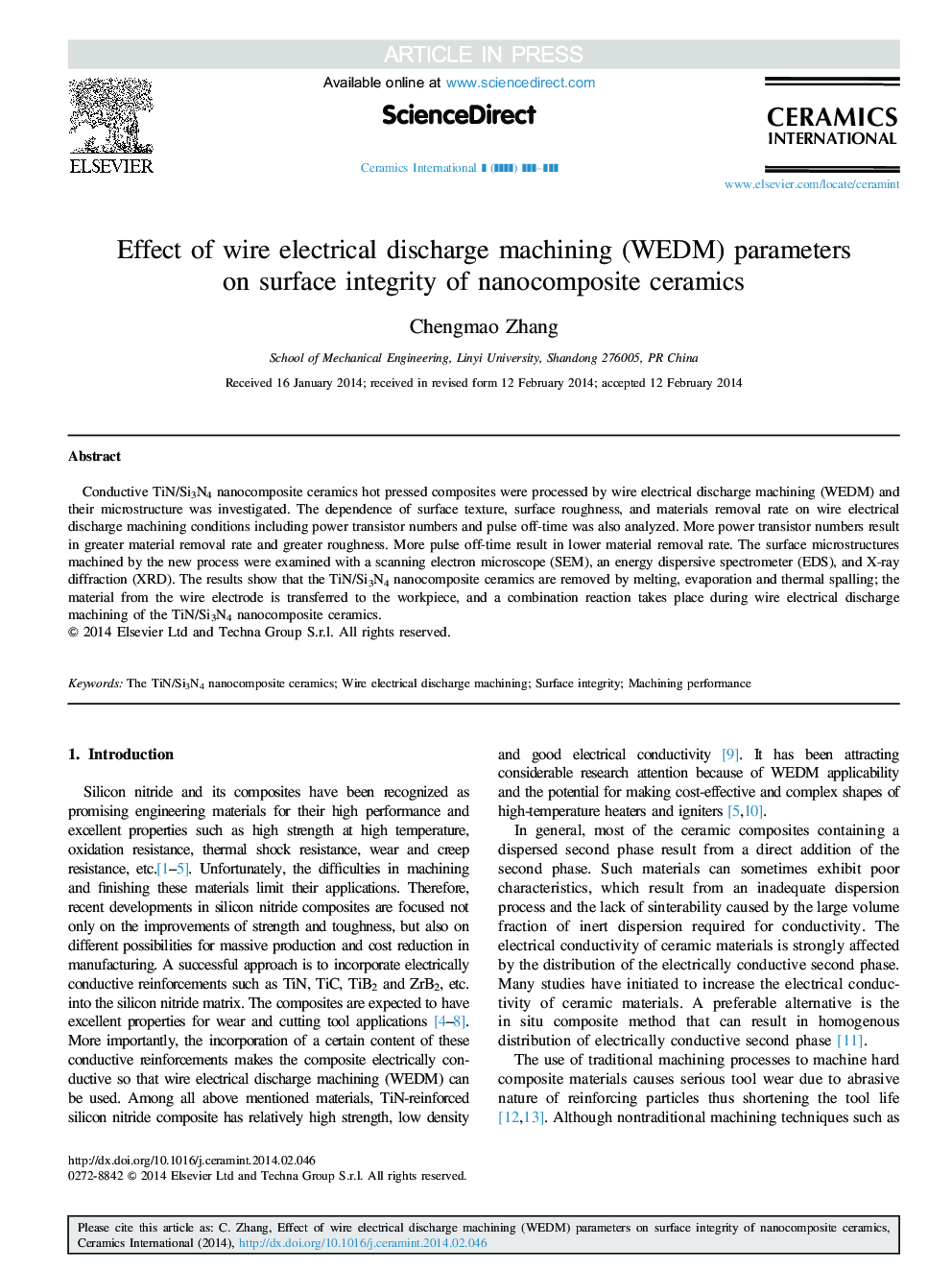| Article ID | Journal | Published Year | Pages | File Type |
|---|---|---|---|---|
| 10625224 | Ceramics International | 2014 | 6 Pages |
Abstract
Conductive TiN/Si3N4 nanocomposite ceramics hot pressed composites were processed by wire electrical discharge machining (WEDM) and their microstructure was investigated. The dependence of surface texture, surface roughness, and materials removal rate on wire electrical discharge machining conditions including power transistor numbers and pulse off-time was also analyzed. More power transistor numbers result in greater material removal rate and greater roughness. More pulse off-time result in lower material removal rate. The surface microstructures machined by the new process were examined with a scanning electron microscope (SEM), an energy dispersive spectrometer (EDS), and X-ray diffraction (XRD). The results show that the TiN/Si3N4 nanocomposite ceramics are removed by melting, evaporation and thermal spalling; the material from the wire electrode is transferred to the workpiece, and a combination reaction takes place during wire electrical discharge machining of the TiN/Si3N4 nanocomposite ceramics.
Related Topics
Physical Sciences and Engineering
Materials Science
Ceramics and Composites
Authors
Chengmao Zhang,
